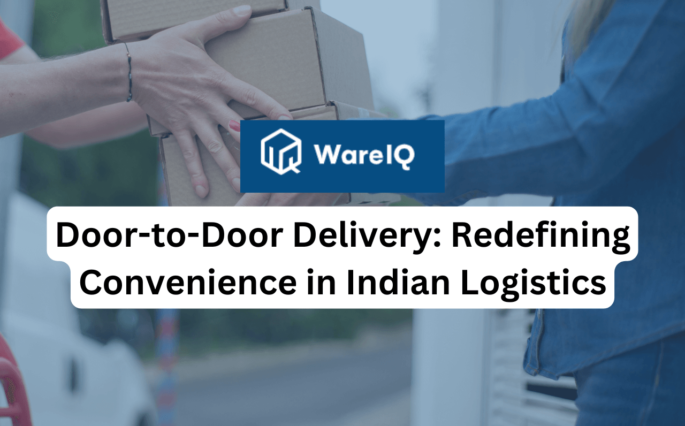Optimizing Inventory and Supply Chain for Flipkart Independence Day Sale 2025

The Flipkart Independence Day Sale, also known as the Flipkart 15 August Sale, is a highly anticipated event in the Indian e-commerce calendar. Celebrated annually around India’s Independence Day, this sale offers massive discounts, exclusive deals, and attractive offers across various product categories, including electronics, fashion, home appliances, and more. The event attracts millions of shoppers who look forward to availing themselves of the best deals and significant savings. For Flipkart, this sale is about increasing sales, enhancing customer loyalty and expanding its market reach.
The Flipkart Independence Day Sale poses unique challenges and opportunities from a supply chain and inventory management perspective. The surge in customer orders requires efficient supply chain management to ensure timely deliveries and customer satisfaction. Effective inventory management is crucial to prevent stockouts or overstocking, which can impact profitability and customer experience. Additionally, understanding and addressing the Flipkart pincode problem, optimizing central hubs and facilities, and leveraging express delivery options are essential to streamline operations during this high-demand period.
- Flipkart Supply Chain Management
- Flipkart Inventory Management
- What Is Flipkart Express Delivery?
- What Is Flipkart Pincode Problem?
- Flipkart Central Hub and Facility
- Conclusion
- FAQs About Flipkart Independence Day Sale
- What is the Flipkart Independence Day Sale?
- How does Flipkart manage its supply chain during the Independence Day Sale?
- What is Flipkart Express Delivery?
- What challenges are associated with the Flipkart pincode problem?
- How do Flipkart's central hubs and facilities enhance supply chain efficiency?
- How can WareIQ optimise inventory for Flipkart's Independence Day Sale?
Flipkart Supply Chain Management
Flipkart’s supply chain management is a complex and highly efficient system designed to handle the vast scale of operations required by one of India’s largest e-commerce platforms. The company utilises advanced technologies and logistics strategies to manage the flow of goods from suppliers to customers. Critical components of Flipkart’s supply chain management include:
- Vendor Management: Building solid relationships with a vast network of suppliers to ensure a steady supply of products.
- Warehousing: Strategically located warehouses and fulfilment centres across the country to minimise delivery times and manage inventory efficiently.
- Order Processing: Automated systems for quick and accurate order processing, ensuring that customer orders are picked, packed, and dispatched promptly.
- Logistics and Transportation: A robust logistics network that includes partnerships with third-party logistics providers and a fleet of delivery vehicles for efficient last-mile delivery.
- Real-Time Tracking: Advanced tracking systems to monitor shipments in real-time, providing customers with accurate delivery updates and improving overall transparency.
- Returns Management: Efficient handling of returns and exchanges to maintain customer satisfaction and manage reverse logistics smoothly.
By focusing on these aspects, Flipkart ensures that its supply chain is agile, scalable, and capable of meeting the high demands of events like the Independence Day Sale.
Please check: WareIQ’s Branded Tracking feature
Flipkart Inventory Management
Effective inventory management is critical for Flipkart to meet the high demand during the Independence Day Sale. Flipkart employs several strategies to ensure optimal inventory levels and minimise stock-related issues:
- Demand Forecasting: Using historical sales data, market trends, and predictive analytics to forecast demand accurately and adjust inventory levels accordingly.
- Automated Replenishment: Implementing automated systems to reorder stock when levels fall below a predefined threshold, ensuring continuous product availability.
- SKU Optimization: Managing a diverse range of SKUs to balance popular items with niche products, ensuring a wide selection for customers while minimising excess inventory.
- Warehouse Efficiency: Utilising efficient warehouse management systems (WMS) to streamline inventory storage, picking, and packing processes.
- Inventory Turnover: Monitoring inventory turnover rates to ensure products are sold and replenished regularly, reducing the risk of obsolescence and excess stock.
- Safety Stock: Maintaining a safety stock buffer to protect against unexpected demand spikes and supply chain disruptions.
By implementing these inventory management practices, Flipkart can ensure it has the right products in the quantities to meet customer demand during the Independence Day Sale, enhancing customer satisfaction and maximising sales.
What Is Flipkart Express Delivery?
Flipkart Express Delivery is a premium service offered by Flipkart that guarantees faster delivery of products to customers. This service is designed to meet the increasing demand for quick and reliable delivery, especially during high-traffic sales events like the Independence Day Sale. Key features of Flipkart Express Delivery include:
- Reduced Delivery Time: Products are delivered within a significantly shorter timeframe than standard delivery options, often within 1-2 days.
- Priority Processing: Orders eligible for express delivery are prioritised in the fulfilment process, ensuring they are picked, packed, and dispatched promptly.
- Real-Time Tracking: Customers can track their express delivery orders in real-time, receiving updates on the status and estimated delivery time.
- Broader Coverage: Flipkart Express Delivery is available in major cities and towns across India and covers a large customer base.
- Increased Customer Satisfaction: By offering faster delivery options, Flipkart enhances the shopping experience, increasing customer satisfaction and loyalty.
This service is especially valuable during the Independence Day Sale when customers expect quick delivery of their purchases so they can enjoy their deals and discounts without delay.
Related read: Same Day Delivery Service
What Is Flipkart Pincode Problem?
The Flipkart pincode problem refers to the challenges of delivering products to specific pin codes or areas due to logistical constraints, geographical limitations, or other factors. This problem can impact the customer experience and limit Flipkart’s ability to serve a wider audience. Critical aspects of the Flipkart pincode problem include:
- Delivery Reach: Flipkart’s delivery network may not cover some remote or rural areas, resulting in unserviceable pin codes.
- Infrastructure Limitations: Poor infrastructure in certain regions can make it difficult for delivery vehicles to access these areas, leading to delays or non-delivery.
- High Delivery Costs: Delivering to distant or less accessible locations can incur higher costs, which may not be feasible for Flipkart to absorb or pass on to customers.
- Logistical Challenges: Navigating complex delivery routes and managing last-mile logistics in densely populated urban areas can pose significant challenges.
To address these issues, Flipkart continuously expands its delivery network, optimizes delivery routes, partners with local logistics providers, and leverages technology to improve delivery efficiency and reach.
Flipkart Central Hub and Facility
Flipkart’s central hub and facility are crucial in its supply chain and logistics operations. These centralised locations are designed to streamline the flow of goods, enhance efficiency, and reduce delivery times. Critical features of Flipkart’s central hub and facility include:
- Strategic Location: Central hubs are strategically located to effectively serve large regions, minimising transit times and reducing delivery costs.
- Consolidation Centers: These hubs act as consolidation centres where products from various suppliers are received, sorted, and dispatched to regional distribution centres or directly to customers.
- Advanced Automation: Equipped with state-of-the-art automation technologies, central hubs ensure efficient order sorting, picking, packing, and dispatching.
- Scalability: Central facilities are designed to handle high volumes of orders, especially during peak sales events like the Independence Day Sale, ensuring seamless operations.
- Inventory Management: Central hubs maintain optimal inventory levels, facilitating quick replenishment of regional centres and reducing the risk of stockouts.
By leveraging central hubs and facilities, Flipkart can enhance its supply chain efficiency, reduce delivery times, and improve overall customer satisfaction.
Conclusion
The Flipkart Independence Day Sale is a major event that offers significant opportunities for both Flipkart and its sellers to drive sales and attract new customers. Effective inventory and supply chain management are essential to maximise success during this period. By employing advanced strategies and leveraging technology, Flipkart ensures that it can meet the high demand and deliver a seamless shopping experience to its customers.
In conclusion, optimizing inventory and supply chain operations during the Flipkart Independence Day Sale is crucial for achieving sales targets and maintaining customer satisfaction. Through efficient supply chain management, accurate inventory forecasting, and leveraging express delivery options, Flipkart can provide timely deliveries and an exceptional shopping experience, reinforcing its position as a leading e-commerce platform in India.
WareIQ’s advanced fulfilment solutions can further support Flipkart sellers by providing real-time inventory tracking, automated replenishment, and a pan-India fulfilment network to ensure optimal stock levels and faster deliveries during the sale.
Also read: Flipkart Big Freedom Sale Inventory and Logistics Strategies
FAQs About Flipkart Independence Day Sale
What is the Flipkart Independence Day Sale?
The Flipkart Independence Day Sale, also known as the Flipkart 15 August Sale, is an annual event offering significant discounts and exclusive deals across various product categories. It attracts millions of shoppers looking for great bargains and substantial savings.
How does Flipkart manage its supply chain during the Independence Day Sale?
Flipkart employs advanced supply chain management strategies, including vendor management, efficient warehousing, automated order processing, robust logistics, real-time tracking, and adequate returns management to handle the high demand during the sale.
What is Flipkart Express Delivery?
Flipkart Express Delivery is a premium service offering faster delivery times, usually within 1-2 days. This service prioritises order processing and provides real-time tracking, enhancing customer satisfaction, especially during high-traffic sales events.
What challenges are associated with the Flipkart pincode problem?
The Flipkart pincode problem includes challenges related to delivering products to remote or inaccessible areas due to logistical constraints, poor infrastructure, high delivery costs, and complex delivery routes. Flipkart addresses these issues by expanding its delivery network and optimising logistics
How do Flipkart’s central hubs and facilities enhance supply chain efficiency?
Flipkart’s central hubs and facilities are strategically located and equipped with advanced automation technologies to streamline sorting, picking, packing, and dispatching orders. These hubs serve as consolidation centres, maintaining optimal inventory levels and ensuring quick replenishment of regional centres, thereby reducing delivery times and enhancing overall efficiency.
How can WareIQ optimise inventory for Flipkart’s Independence Day Sale?
WareIQ can help sellers optimise their inventory and supply chain by providing real-time inventory tracking, automated replenishment systems, and a pan-India fulfilment network. This ensures that sellers maintain optimal stock levels and can quickly respond to demand fluctuations during the Flipkart Independence Day Sale, ultimately enhancing delivery efficiency and customer satisfaction.








